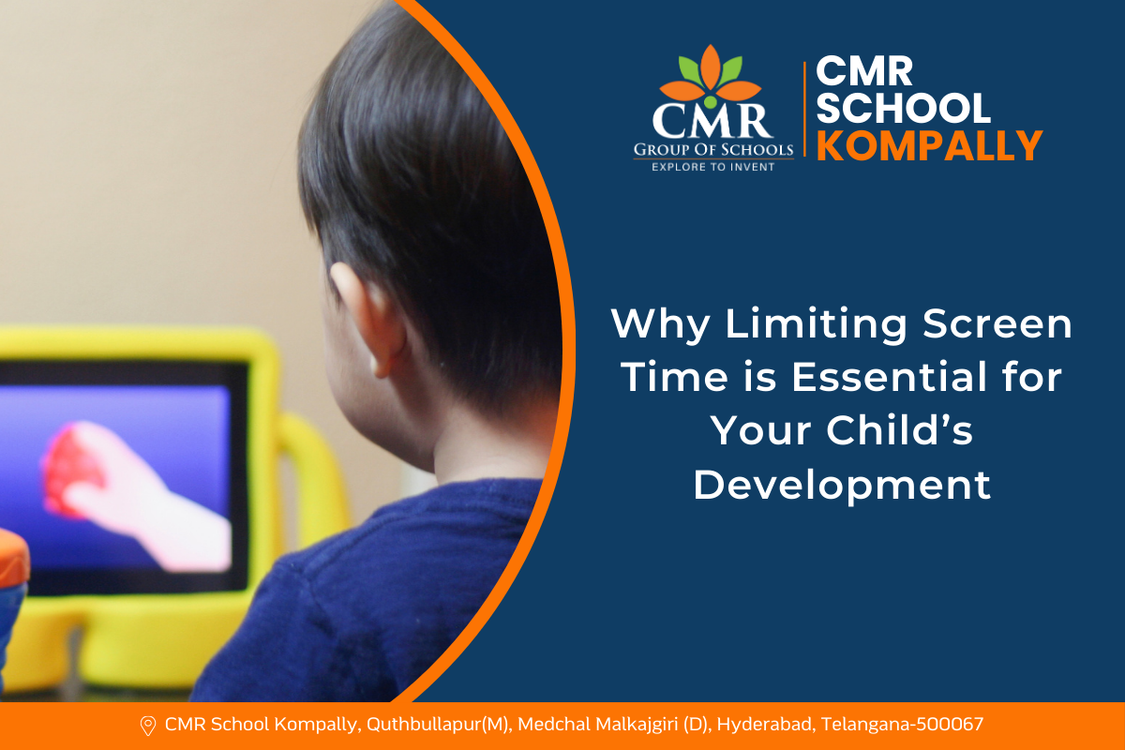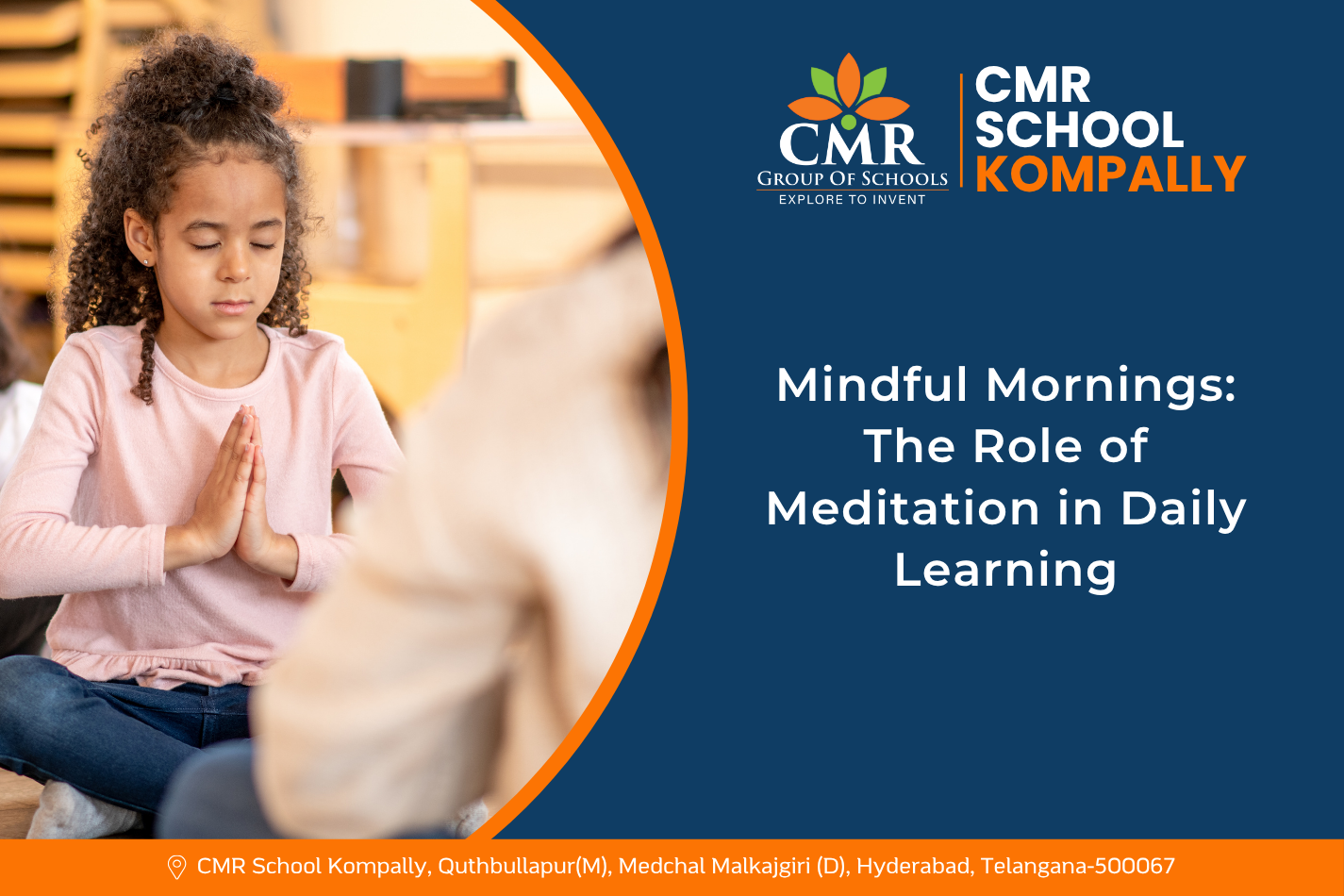Introduction
In today’s digital world, screens are everywhere—smartphones, tablets, computers, and TVs. Kids are more engaged with screens than ever before, often spending hours glued to their devices. But is this really good for their growth and development? The answer is a resounding no.
Excessive screen time can negatively impact children’s physical health, social skills, and academic performance. At CMR School, Kompally, we believe in a balanced approach to technology. Let’s explore why limiting screen time is essential for your child’s overall development and how you can achieve it.
Table of Contents
| Sr | Headings |
|---|---|
| 1 | The Effects of Excessive Screen Time |
| 2 | How Screens Affect Brain Development |
| 3 | Impact on Physical Health |
| 4 | Social and Emotional Consequences |
| 5 | Reduced Academic Performance |
| 6 | The Importance of Outdoor Play |
| 7 | Encouraging Creative Activities |
| 8 | Setting Screen Time Limits |
| 9 | Role of Parents and Teachers |
| 10 | Digital Detox: How to Make it Work? |
| 11 | Creating a Screen-Free Environment at Home |
| 12 | The Benefits of Family Time Without Screens |
| 13 | How Schools Can Help? |
| 14 | Finding a Healthy Balance |
| 15 | Conclusion |
1. The Effects of Excessive Screen Time
Too much screen time can lead to multiple issues, including reduced concentration, sleep disturbances, and even behavioral problems. When kids spend excessive time on screens, they miss out on real-world experiences that are crucial for their growth.
2. How Screens Affect Brain Development
Children’s brains develop rapidly, especially in their early years. Excessive screen exposure can interfere with cognitive growth by reducing their attention span and problem-solving skills. Studies have shown that prolonged screen time can negatively affect memory and learning.
3. Impact on Physical Health
Spending long hours in front of screens leads to poor posture, eye strain, and even obesity due to lack of physical activity. A sedentary lifestyle can cause long-term health issues, making it crucial to encourage kids to stay active.
4. Social and Emotional Consequences
Excessive screen use can impact a child’s ability to develop social skills. Face-to-face interactions help children understand emotions, empathy, and effective communication. Too much screen time can lead to social isolation and even anxiety.
5. Reduced Academic Performance
When kids spend more time on screens, they often neglect their studies. The constant distraction from social media, games, and videos hampers their concentration, leading to lower grades and poor academic performance.
6. The Importance of Outdoor Play
Playing outside is essential for a child’s overall development. It improves physical health, boosts creativity, and enhances social skills. Encouraging outdoor activities helps in reducing dependency on screens.
7. Encouraging Creative Activities
Instead of screen time, kids should be encouraged to engage in activities like painting, reading, or storytelling. Creative activities help in brain development and enhance problem-solving skills.
8. Setting Screen Time Limits
Parents should establish clear screen time rules. The American Academy of Pediatrics recommends no more than one hour of screen time for kids aged 2-5 and consistent limits for older children.
9. Role of Parents and Teachers
Parents and teachers play a vital role in ensuring a child’s screen time is balanced. Setting a good example, engaging kids in discussions, and offering alternatives to screen-based activities can make a difference.
10. Digital Detox: How to Make it Work?
A digital detox helps kids reset their habits. Start with small changes like screen-free meals, tech-free zones at home, and encouraging more physical activities.
11. Creating a Screen-Free Environment at Home
A designated area in the house where screens are not allowed, such as bedrooms or dining tables, can help children develop healthy habits and reduce excessive screen exposure.
12. The Benefits of Family Time Without Screens
Spending quality time together without screens strengthens family bonds. Simple activities like board games, storytelling, or family outings help kids develop emotionally and socially.
13. How Schools Can Help?
Schools like CMR School, Kompally promote a balanced approach to technology use. Encouraging hands-on learning, interactive discussions, and outdoor activities help reduce students’ dependence on screens.
14. Finding a Healthy Balance
Rather than eliminating screens completely, the key is to find a balance. Encouraging educational screen time while limiting entertainment-based usage is the best approach.
Conclusion
Limiting screen time is essential for a child’s physical, mental, and emotional well-being. Encouraging outdoor activities, fostering creativity, and setting boundaries can help children grow into well-rounded individuals. At CMR School, Kompally, we prioritize holistic development and encourage parents to take an active role in balancing their child’s screen time.
FAQs
1. How much screen time is too much for children?
Excessive screen time is anything beyond the recommended limits—one hour for young kids and two hours for older children.
2. What are some alternatives to screen time?
Encouraging outdoor play, creative hobbies like painting and reading, and interactive family activities are great alternatives.
3. How can parents reduce screen time at home?
Setting clear rules, creating tech-free zones, and engaging children in offline activities can help reduce screen time.
4. Can educational screen time be beneficial?
Yes, educational content can be useful, but it should still be limited and balanced with other activities.
5. What role do schools play in limiting screen time?
Schools can encourage active learning, outdoor activities, and structured screen use to help students develop a healthy relationship with technology.



